The Article
Performance DC From Clearaudio: Float On
2nd March 2018
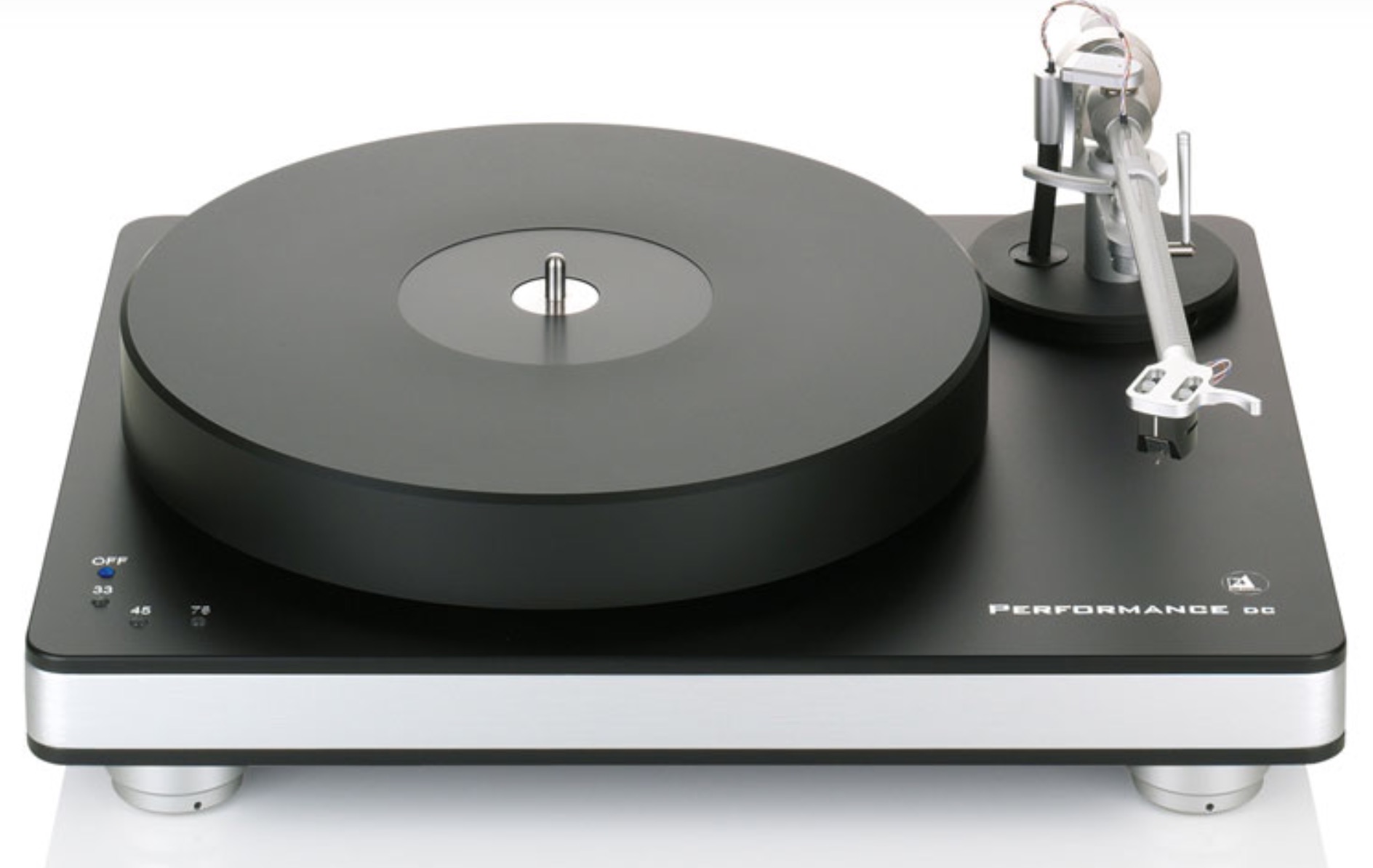
Fitting neatly into the market’s midrange slot, Paul Rigby reviews Clearaudio’s Performance DC turntable with Clarify arm and Virtuoso MM cartridge
A vastly experienced and long-standing German hi-fi company, Clearaudio’s range of turntables have been a commanding presence on the market for many years. I find the company has a definite styling: strong, clean, simple in line and generally unfussy.
The relatively heavy (11kg) Performance DC follows that credo arriving with an ‘efficient’ footprint. That is, no space is wasted nor is it used unnecessarily.
The brushed aluminium and high density fibreboard plinth features secure push button controls for three (yes 78rpm is supported here) speeds plus an Off button. The plinth is supported on three noise isolating feet.
Magnets are all over this turntable design. The turntable floats over more than it touches, it seems.
For example, in the centre, under the 40mm polyoxymethylene (or Delrin to you and me) platter is an inverted ceramic magnetic bearing. Over that sits a sub-platter that houses the supplied belt and runs around the DC motor’s pulley.
The Clarify arm looks svelte and rather beautiful. The bearing is formed by, you guessed it, two opposing magnets with a pivot wire supplying tension. It feels and acts like a unipivot.
During use the Performance DC turntable felt strong, dependable and trustworthy.
INSTALLATION
Overall, putting the turntable together was a relatively straightforward job for a design of this quality and price (at least the plinth, platter and the arm itself are straightforward). You do benefit if you’ve had some experience with turntables but even a beginner shouldn’t have too many issues as long as they carefully plow through the manual. Don’t get over-confidant, take things slowly and pay attention to the instructions and you’ll be fine.
Adding a ground wire to the base of the plinth is a good idea. You can run this to a ground connector on your hi-fi such as the one found on your phono amplifier.
You add a couple of drops of oil from a supplied pot to the bearing shaft, insert the bearing over the top, the sub-platter over that, the belt to the sub platter and the motor pulley and the main platter on top of the lot.
You can twist the feet anticlockwise or clockwise to regulate the levelling of the plinth, if required.
After that, there’s the arm which is easily and firmly sited to the plinth. Again, this is pretty straightforward. Once the cables are through the tonearm base you’ll need to adjust the tonearm height. Once done, you tighten the arm with an Allen key in the base. The cartridge is next and that’s your lot.
I did have two issues with the installation of a cartridge and queried them with the company.
The first was setting the tracking force produced, like most arms on the market today, by moving a rear-mounted weight backwards and forwards until the correct position is found.
Instead of a free-moving weight secured by an Allen key, the included Clarify arm uses a knurled, “vernier-style knob” which is neatly fitted flush onto the rear of the arm. The idea is to twist the knob to move the weight slowly, very slowly, across the arm, backwards and forwards. I asked Clearaudio’s own Stefan Kmuch about this point and he kindly got back to me with, “It has a fine pitch thread to set the weight very precisely. The counter weight is additionally decoupled with O-rings. If we would use a ‘quick-adjust mechanism’ this decoupled advantage would not be possible anymore. And on top of that we think you don’t need to be in a hurry while setting up a tonearm.”
Decoupling advantage apart and obviously that’s a strong incentive to initiate this approach in the first place, my issue with this procedure is just that, there is no quick alternative method of finding the approximate position for the weight and then fine-tuning from there onwards. Basically, there is only one mode and its always ‘fine tuning’, which takes a relatively long time. So, if you’ve got a way to go to find your required tracking figure, you’re there forever. It’s a bind. A chore. I tested this to see how long it might take to reach from one end stop the other and…well, it was a long time. My hand was sore. There was one occasion when I was diverted by something, returned to the infernal knob and found myself turning it in the wrong direction, back from whence I’d come! There’s no obvious visual indication which turning direction produces a forward or backward motion you see. Especially as most people will tend to stand at the front of the turntable and reach over to the rear of the arm to change the tracking force.
An extreme experiment? Maybe but everyone encounters different circumstances. One user might find their desired tracking force figure quickly but others might not. There might be a sonic advantage here but beware that you may pay for it during installation.
The other issue is the anti-skate control which is underneath the arm – literally. I mean it’s (in)accessible underneath the plinth itself.
Again Stefan was kind enough to help on this matter too, “…the magnetic bearing is aligned and effectively kept in place the anti-skating wire. It was designed in that way to keep the arm on top of the turntable as clean as possible. Sure it would be comfortable to have access to the knob on top of the turntable but how often would you need to re-adjust the anti-skating setting? It would be very rare and so you have to do it once and then it wont disturb you in any way anymore.”
I agree that it’s a pretty ‘gee-whiz’ bit of kit in technical terms but, in practical use, it’s just another bind, another chore. If I am the kind of guy who likes to tweak his anti-skate – and there are users who set the anti-skate by experimentally tweaking it, I’m becoming one of those, incidentally – I want the thing in easy reach, not hidden underneath the plinth. I could just about poke a finger to control the anti-skate knob without lifting the plinth but it was an effort I could’ve done without.
There’s also no scale on the anti-skate (even if there was, I probably wouldn’t be able to see it). Not everyone may want one. Yet I know of plenty who would appreciate it. Back to my long suffering friend, Stefan, “The thing with the readout type numbering is kind of the same background like the fine pitch thread has: it would be just a ‘approximation’ and not really precise because of lots of tolerances in the materials/components. We recommend to use proper equipment to set up anti-skating (like test record, maybe even oscilloscope etc.) and then you can rely on true facts, not just estimates indicated by a readout type numbering. Which is easier said than done, for reasons I’ve given above.”
Apart from the fact that I find test records too imperfect and I’m always leaving my oscilloscope on the kitchen table with my car keys, I for one find the anti-skate “approximation” useful as a general guideline, if nothing else.
Hence, these Clearaudio suite of tools are just not good enough. The anti-skate controls feel like someone’s brought a pretty and stylish AutoCad drawing to life and stuck it on a working turntable with no real-world testing or consultation. They do work, don’t get me wrong. It’s just that they are unnecessarily awkward.
I’ve gone into some detail here because, depending on your bias and leanings, you will need to be aware of them before you buy. You may agree with me or not but you should be aware, either way. The only reason my final review rating has not been lowered to suit is because these chores will be, for most people, a one only hit. That is, once the turntable has been set up, you can take two Paracetamol, a double whiskey, a massage, organise a few sessions with your Analyst and then enjoy you music.
Or can you? What does that all-important sound quality sound like?
SOUND QUALITY
I began by playing The Kinks’ Misty Water from The Village Green Appreciation Society. The first thing that immediately hit me was the air occupying the stereo image position and how well the soundstage was organised. Each instrument appeared logically grouped without any crowding and with plenty of elbow room on offer. This effect was aided by a certain midrange freshness and space in and around the midrange. The overall effect was a sense of ease from both the vocals and backing instruments. There was never any hint of force or strain here, the music flowed very easily indeed.
Despite a slight lack of midrange insight or body during the guitar play and a certain removal of grunt around the percussion and concerted electric guitar strumming, I was most impressed by the detail and cohesive nature around the upper mids. For example, the piano tracked nicely, always a tough instrument for any turntable to tackle. Here, the piano never flew out of control or smeared its detail. The Piano not only connected to the rest of the soundstage perfectly but added enough reverb to add depth. Similarly, the treble performance was very pleasing. Cymbals were light, held plenty of potential power and added their own frisson of fragility when hit.
Nevertheless, I couldn’t stop fretting about the cartridge supplied by Clearaudio. This is a very nice MM cartridge but I believe that the Performance DC deserves more. Much more. The effect is not as bad as my findings during the review of the £9,000 McIntosh MT5 but I did feel that the Clearaudio’s MM cartridge was holding back the DC. To my mind, the Clearaudio MM cartridge undersells the Performance DC turntable. I tested my theories by adding a £1,300 Ortofon Cadenza Bronze. This time the Clearaudio had to tackle a MC cart and I hoped that the DC would take the upgrade in its stride.
And it did, it certainly did. The DC added a wealth of detail in all areas of the frequency spectrum. Those guitars showed, for the first time, real bite. Halfway through this song, there’s a real element of strumming aggression and the MC-powered DC turntable showed its teeth for the first time. Showing energy and throwing off its civilised shackles. For the first time it sounded…sexy. Heavens, eh?
More than that, the instrumental separation increased along with the midrange insight meaning that the piano appeared in new areas of the mix. For the first time I could hear it ‘rocking out’ as we journalists are apt to say when the mood takes us.
The DC tended to lean a little towards the upper mids which helped cymbal strikes to sound larger in scale, the lead vocal developed an almost childlike clarity while percussion now had real impact with a nice organic bounce from the drum skins.
I decided to turn to the jazz inflected tones of Ethel Ennis and, again, was impressed by the air and space in and around the soundstage. The sense of freedom was impressive indeed while the upper mids, giving that ‘Look at me!’ effect, showed an easy carriage for the brass section with real tonal purity from the trumpets and a texturally fascinating response from the bass saxophones that almost reverberated my chair across the floor.
Meanwhile, Ennis’ vocal delivery benefited from an informative, detailed yet open approach. You feel that the entire recording occurred in a large space, such was the perception from her delivery.
CONCLUSION
Once up and running the turntable provides an open and breezy midrange performance with, when properly supported by that right cartridge, a full and organically impressive lower end that provides a relatively balanced output.
The initial MM-powered set-up reviewed here offered an admirable playback and provided many plus points and highlights but, ultimately, the turntable itself sounded like it was straining at the leash. If you have the cash, then I would buy a Clearaudio Performance DC with a little care. Head straight for a good quality MC cartridge, if you can, to get the very best out of the turntable. Failing that, upgrade as soon as you are able. When you do that, you’ll hear a turntable with plenty of wide-eyed pizazz and energy, a turntable that loves to be the life and soul of the party.
(And before I go, don’t forget the launch of my new Facebook Group – why not pop over and us? It’s already buzzing! Just click https://www.facebook.com/groups/theaudiophileman/)
CLEARAUDIO PERFORMANCE DC TURNTABLE
Price: £3,240 (Performance DC Turntable, Clarify Tonearm & Virtuoso Cartridge)
Tel: 0118 981 4238
Email: [email protected]
Website: clearaudio.de
GOOD: build, spacious mids, instrumental separation, incisive treble
BAD: needs the right cartridge, cartridge installation
RATING: 8
REFERENCE
Origin Live Sovereign turntable
Origin Live Enterprise 12″ arm
Transfiguration Proteus cartridge
Wilson Benesch Circle turntable
Benz Glider Cartridge
Icon PS3 phono amplifier
Aesthetix Calypso pre-amp
Icon Audio MB845 Mk.II monoblock amplifiers
Quad ESL-57 speakers with One Thing upgrade
Vertex AQ & Tellurium Q cable
Blue Horizon Professional Rack System
Harmonic Resolution Systems Noise Reduction Components
All vinyl was cleaned using an Audio Desk’s Ultrasonic Pro Vinyl Cleaner

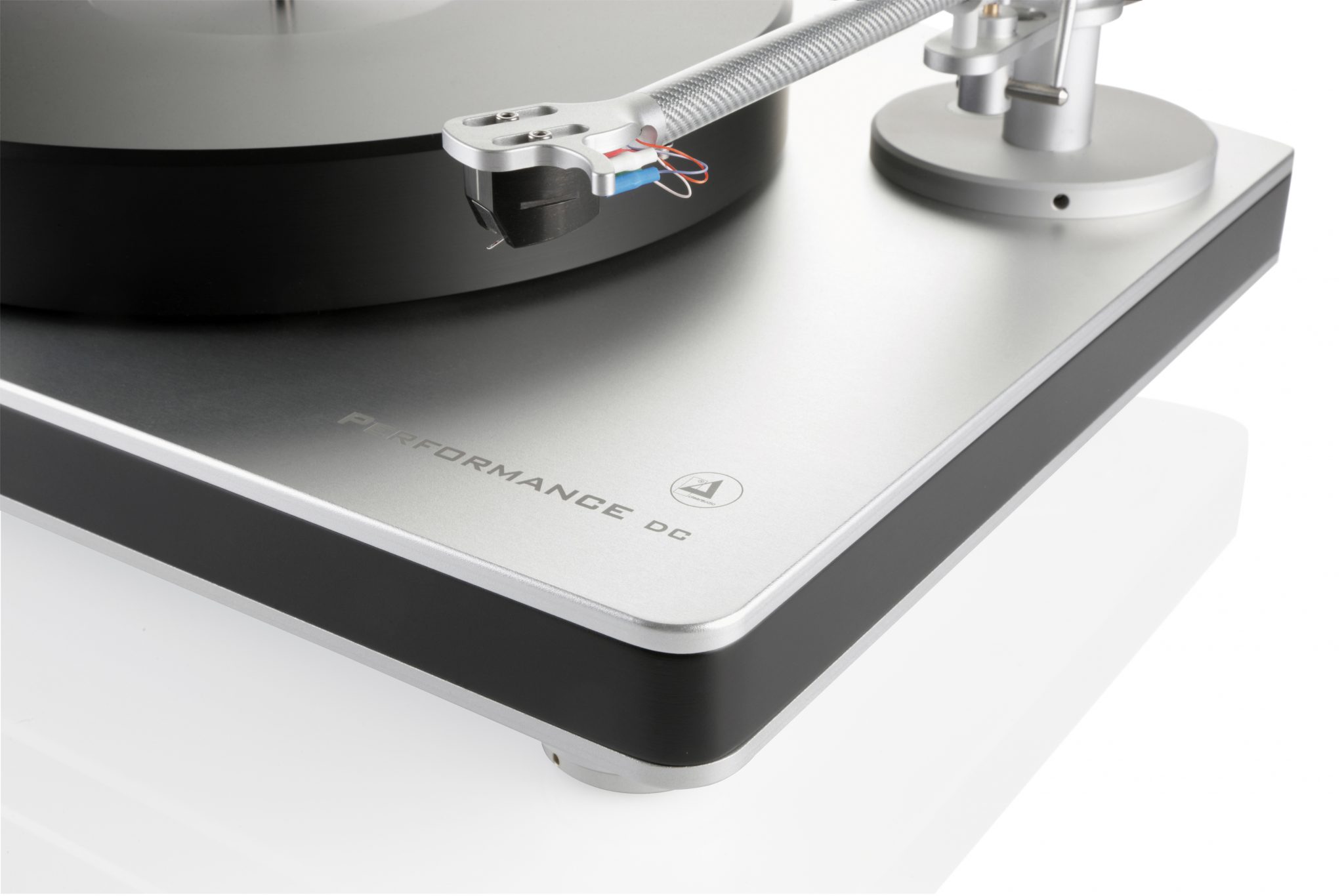

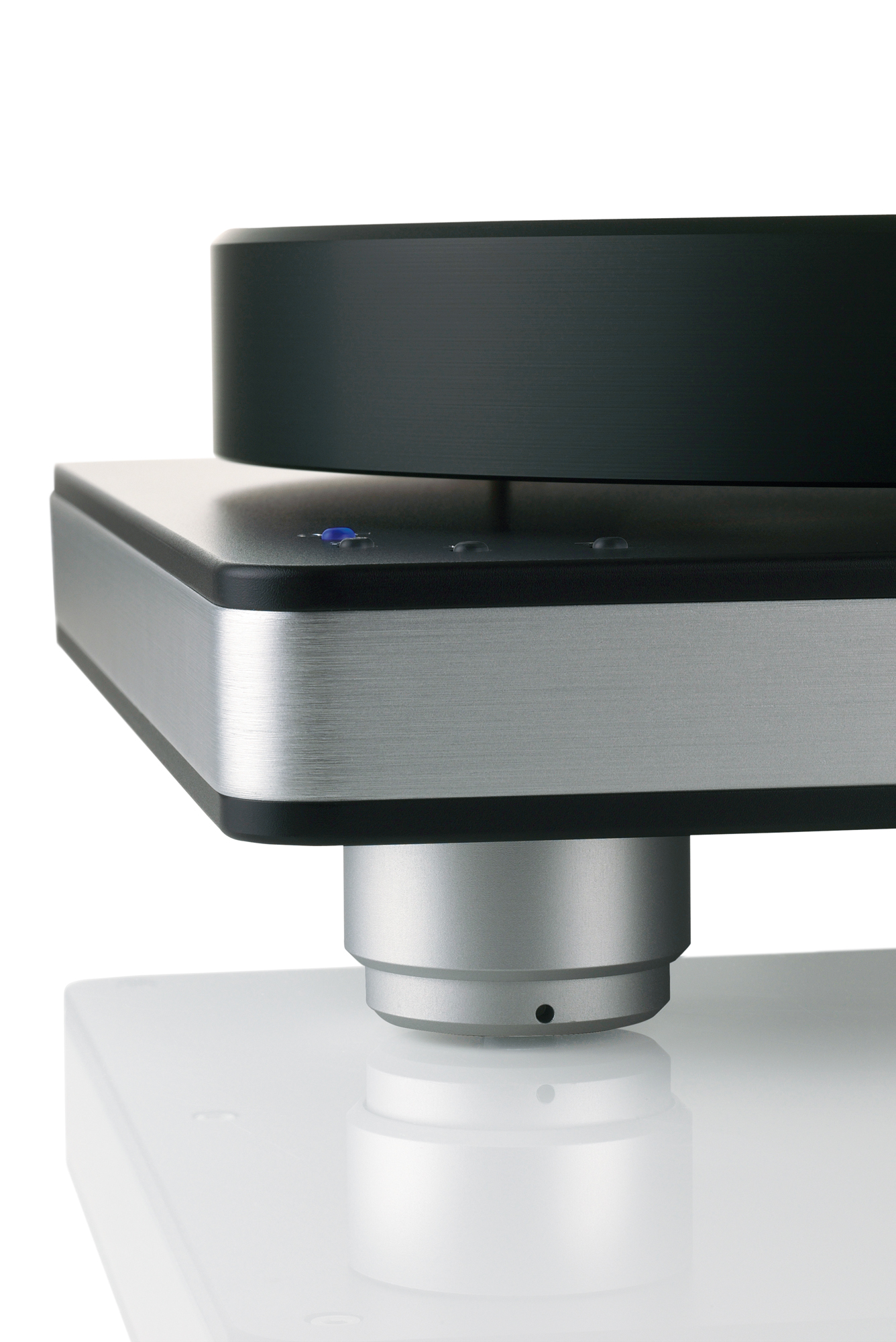
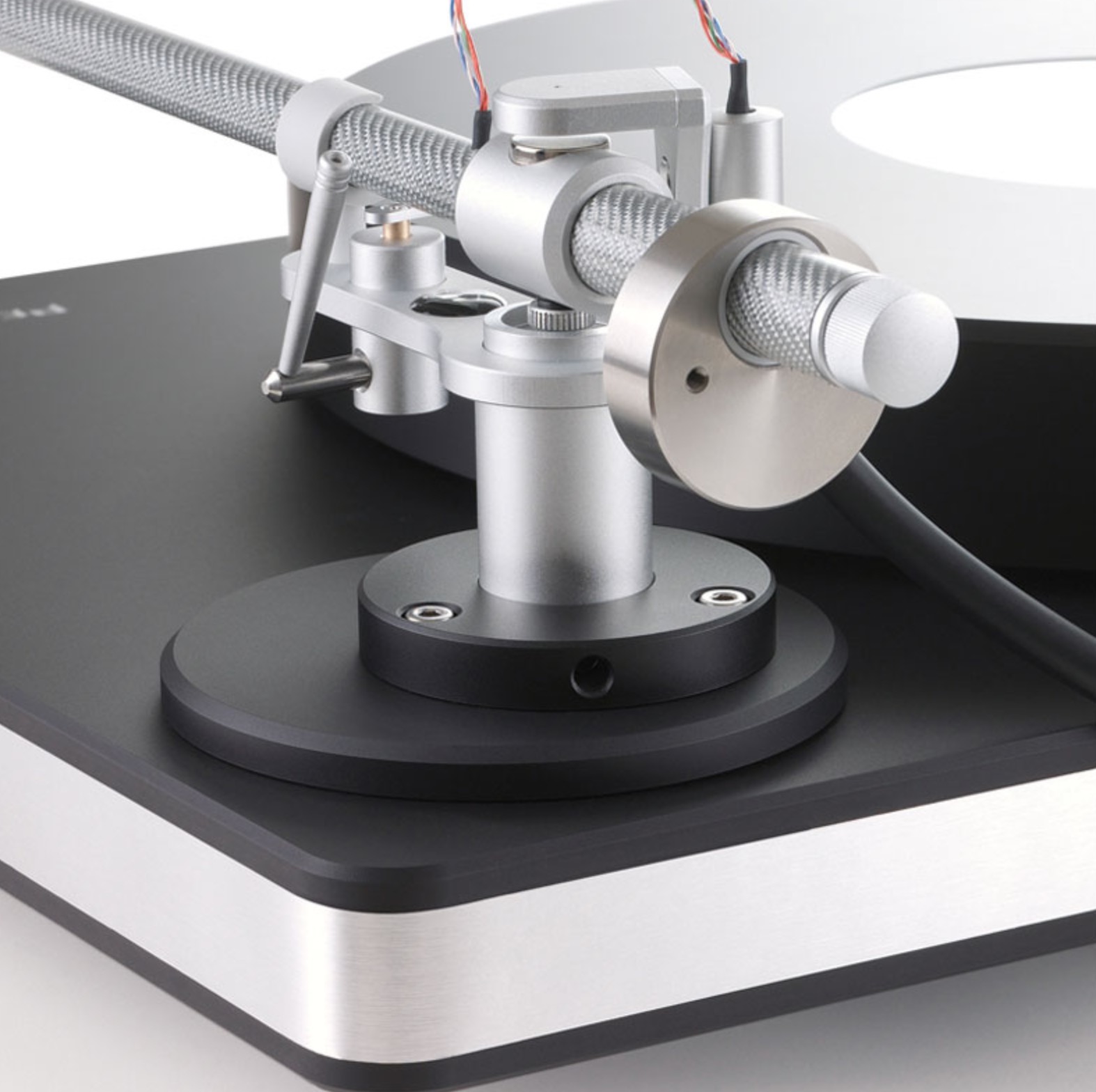
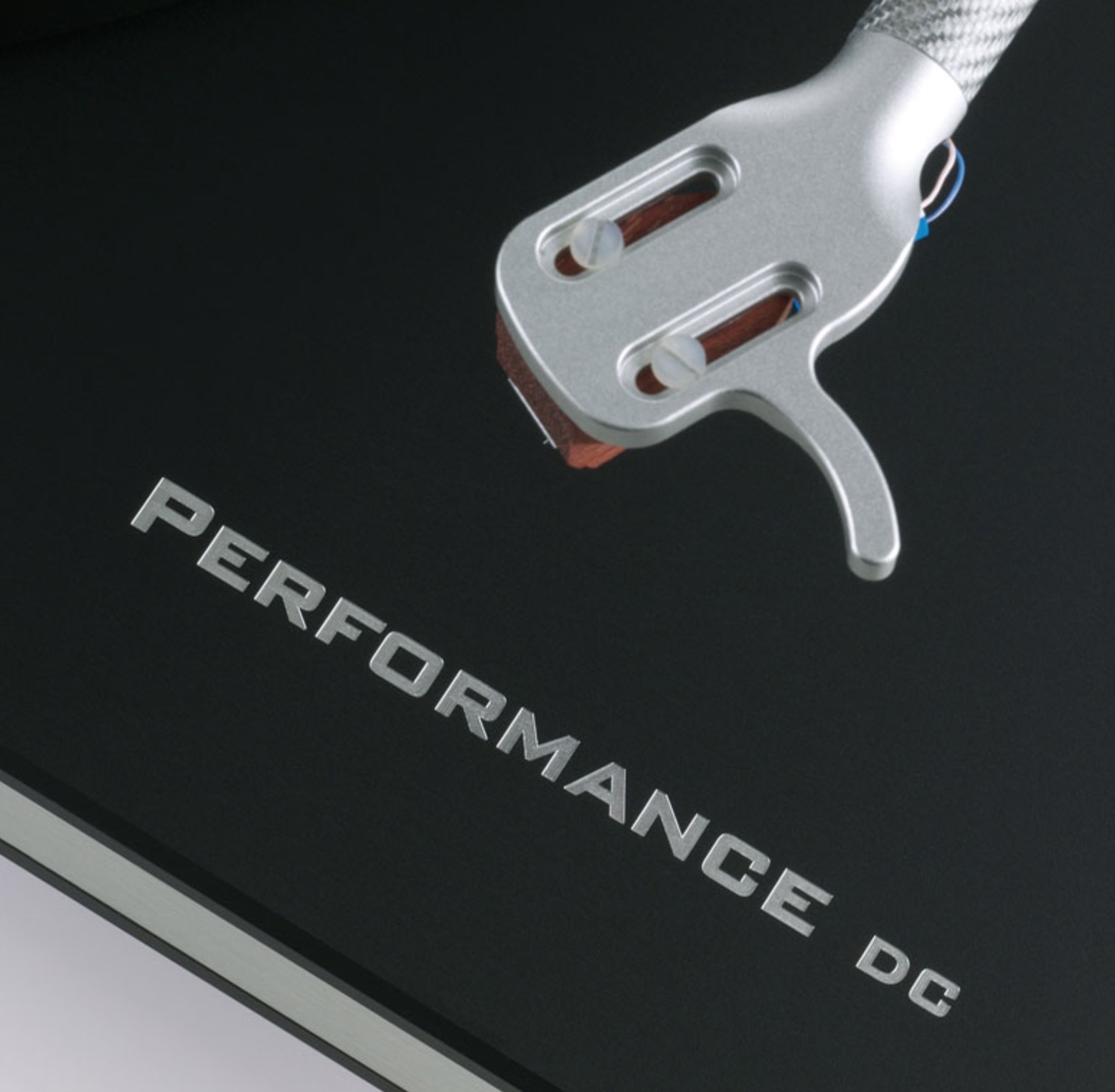
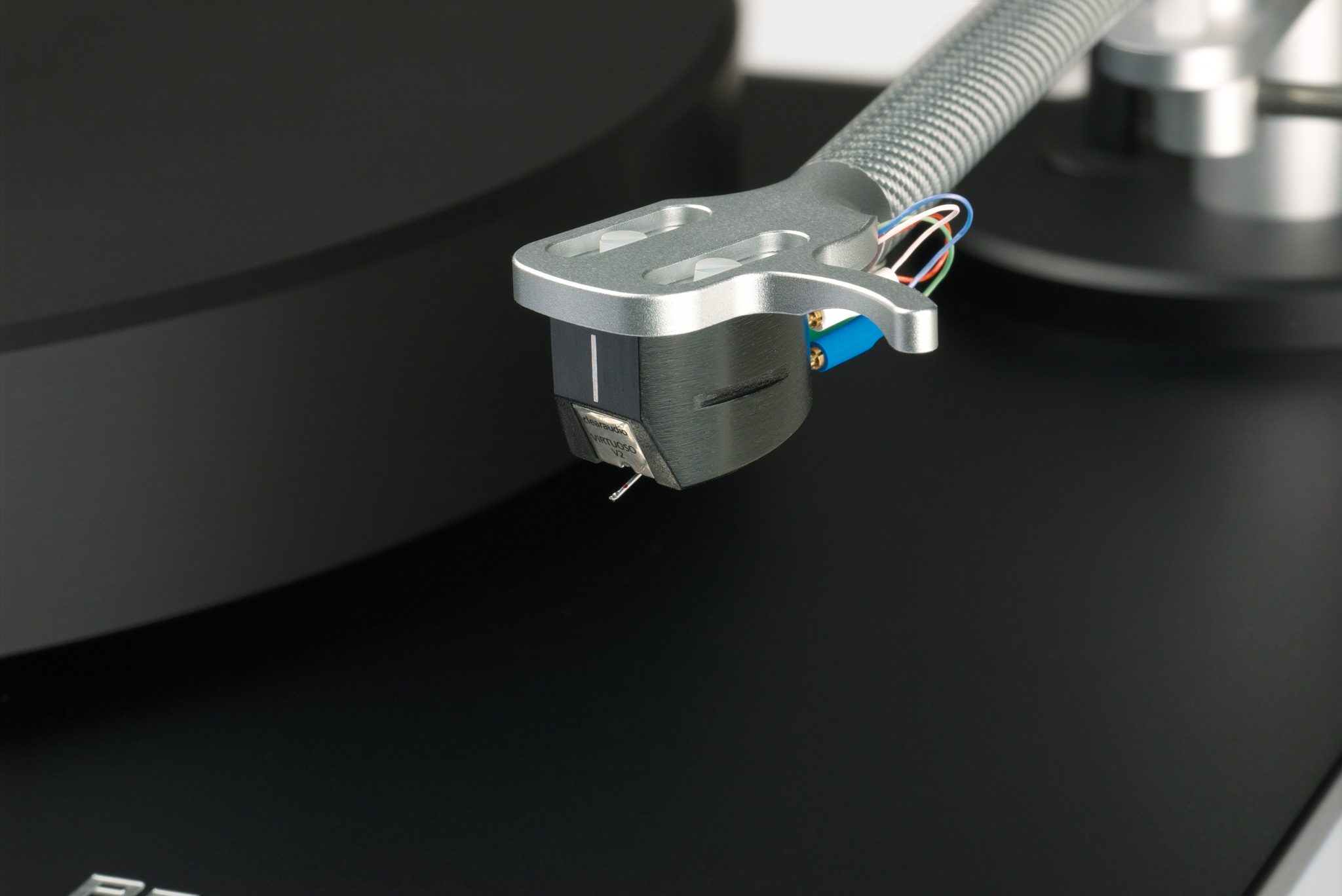

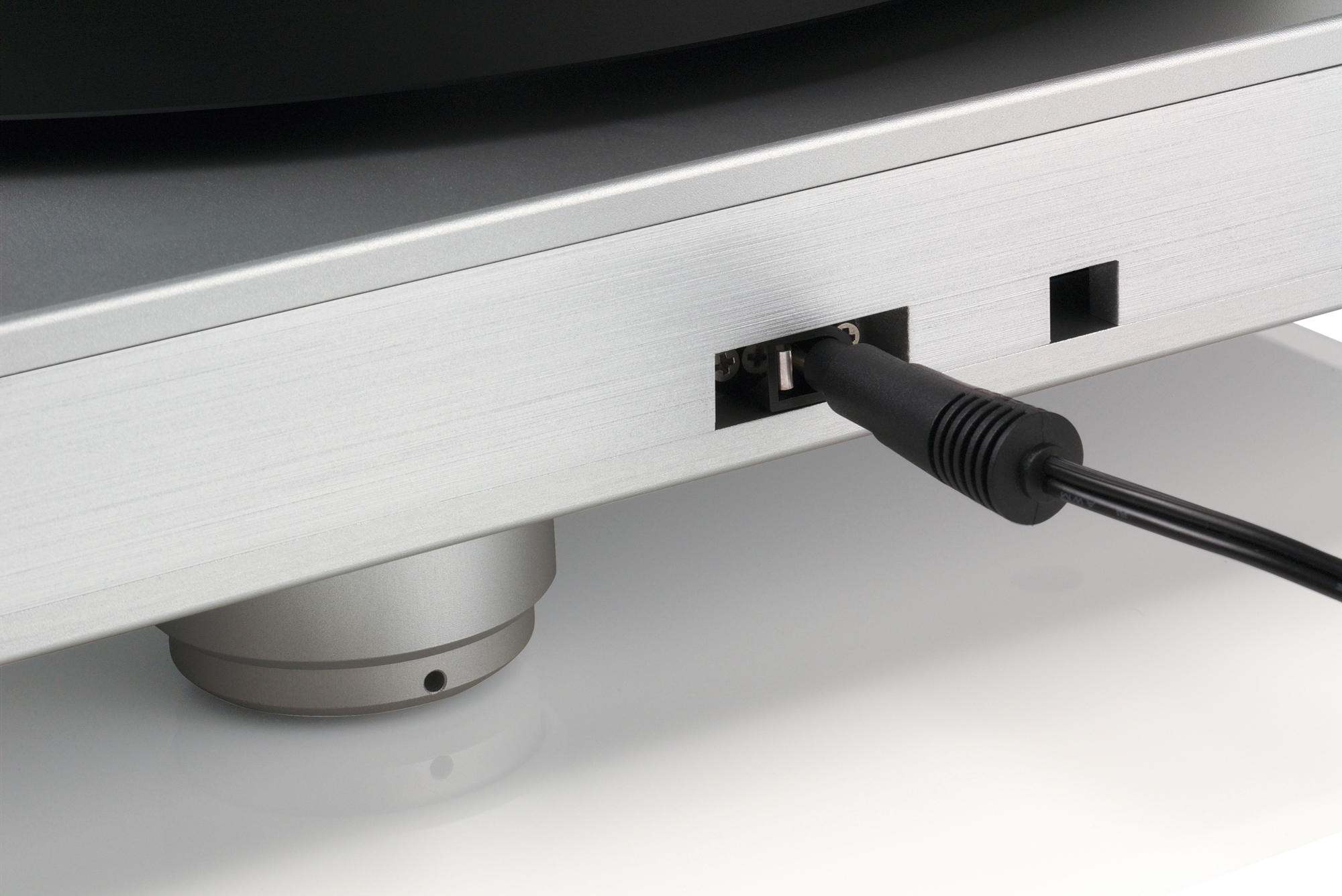
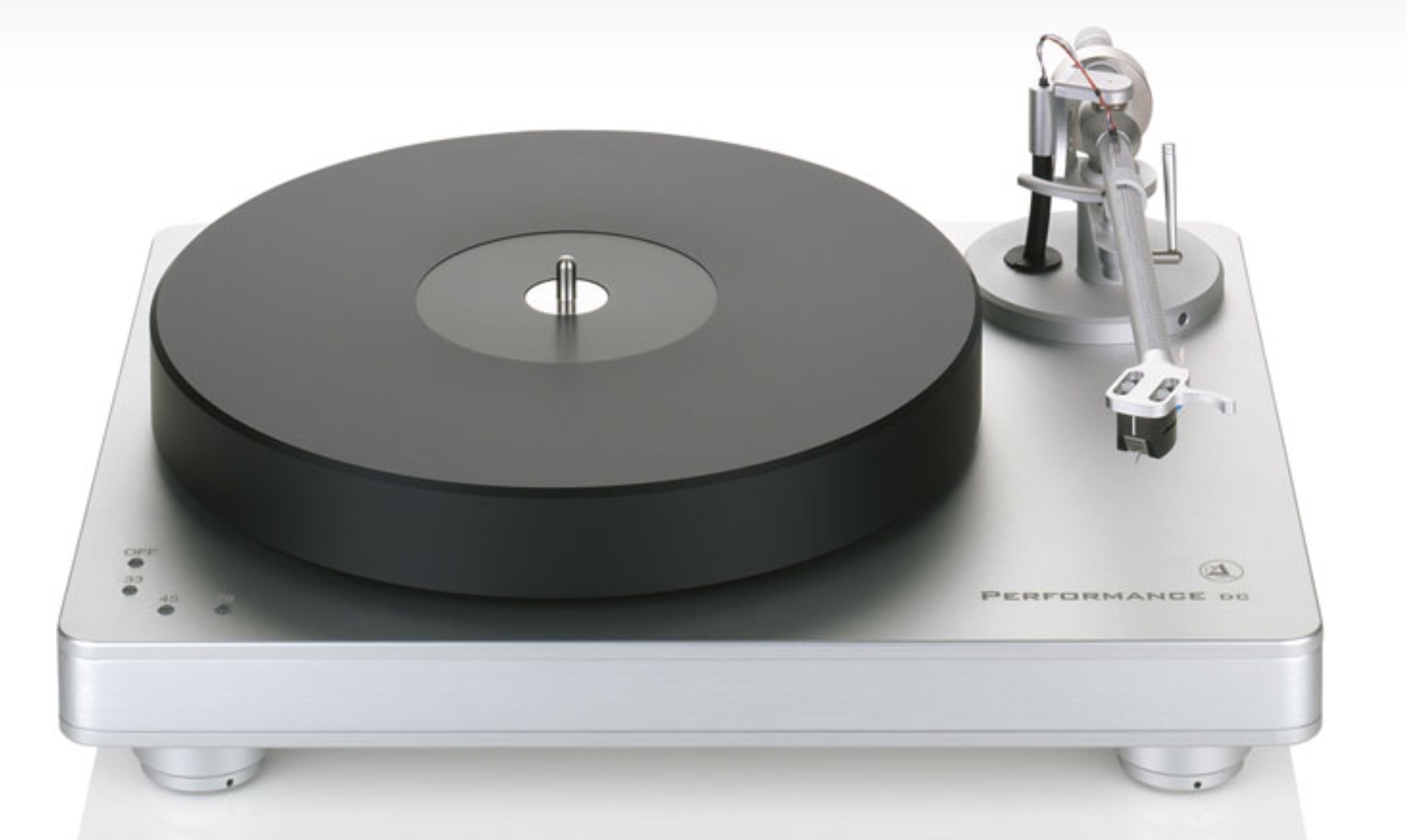


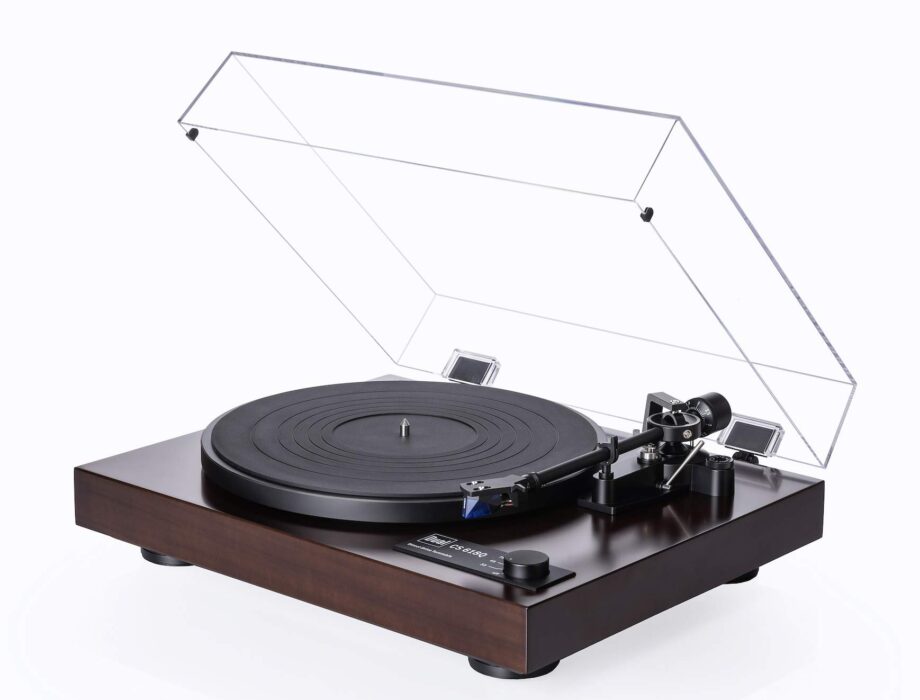
Hi Paul: Absolutely fantastic review ! Nicely done.
And, appropriately, you gave the extra time to make very clear the ridiculously complex VTF and Anti-skate adjustments. That’s inexcusable for a mid-level table -in fact at any price. And perhaps even too much for the most passionate OC types ! Wow.
Stefan Kmuch’s assertion of ‘Set & Forget’ is as impractical as it is naive; Your change of cartridge a case-in-point. And even then, again as you correctly point out, small adjustments (VTF/AS) to your favorite cartridge is something that should be (must be) experimented with to find that “sweet spot”. Something no one on the right mind would dare or care to undertake with this “Only Stefan Kmuch Understands” turntable-arm-cartridge offering.
Audiophiles know of Clearaudio’s superb line hi-fi products -but whoever OK’d this design should be KO’d ! (lol).. .
As you Paul, I must return to the laughable “Set/Forget” mantra of heir Kmuch. Perhaps Stefan was thinking of CD replay -and inadvertently informed us of Clearaudio’s intention of entering the Set-n-Forget CD player market ?
For I (although admittedly out of the table/vinyl record market the past 15-years -yes, fifteen and not the thirty-six years since CD’s introduction) can’t recall the life of a stylus (aka “needle”) exceeding 1,000 hours of life-expectancy ? But, even if one did manage to successfully set-up this table, what happens if the wife, kid or mom (OK us too) accidentally bends the needle whilst cleaning/dusting ? One must repeat this Set-n’ Forget punishing procedure yet again ? Or the fact you may have to repeat this set-up procedure (with your favorite cartridge -if ever set up correctly) sooner than every 1,000 hours of playing time ? Or maybe you simply wish to use another cartridge.
Uhhh, no. Not needed. Move on from this model. And fast.
An informative, passionate review. It was a pleasure to read.
pj
Many thanks for your comments Peter.
Mine came pre-set essentially perfectly. I’ve enjoyed adjusting it to hear what small differences that makes. That’s part of the joy of vinyl. Nearly all the aforementioned problems vanish with the Tracer arm. Sound is just as Peter describes, and absolutely lovely. Zero complaints here.
Dear Paul,
Nice review.
Question : would you prefer the SL 1200 G above the Clearaudio DC as they are in the same price range.
Thank you for your reply.
Regards,
Marc
Thanks Marc – I would disagree, I’m afraid. The 1200G is unfinished when it’s out of the box. I believe you need to spend a lot more (detailed in my 1200G review) to get it working properly. On that basis, you might want to look at a different turntable comparison 🙂
Fantastic review Paul. I have the chance to get an upgrade Performance DC with clarify tone arm and MC Essence cart. And all this at 60% discount. Given I can get it for cheaper than most concept tables, I have to assume this is a brilliant purchase. Your thoughts would be greatly appreciated.
60%? Yes. Basically. 🙂
Discounted to 60% of original price. My bad. Either way I’m sure that’s a hell of a deal. Many thanks. As always your reviews are excellent and very helpful.
Well I am happy to say that I did get the Performance DC at 50% in total, upgrading tonearm (to clarify), cart (to essence), and getting the Balance v2. Brand new, in a store that was discontinuing their relationship with Clearaudio. There is still a chance if I am willing to get the Jubilee or Stradivari Cart at half price – is that overkill?
Hi Michael – one thing I’ve learned in putting together a turntable ‘team’ of items is to aim for a rule of thirds. So aim to have your plinth/platter, your arm and your cart at the same price. So 33:33:33 in ratio terms. Most people don’t. They often end up with something like 70:20:10 or similar. So you lose potential capacity and performance. The ratio doesn’t have to be exact. What I’m promoting is to ramp up the quality of the arm and cart. So no, I don’t see your prospective purchases as overkill.
I remember your video on that, it was very informative. I like it it resonates with me as being more logical that the other approaches you here. What about the phono stage. At present I would have, in AUD forgive me, 5K, Arm 2.5K, Cart 2.5K. Phono 5K. I could bump up the cart to 4K (albeit valued higher than that). So based on your wise rules, what of the phono? love to hear. also, lving your videos, sorry it too me so long to become a patreon
Actually, yes. I should talking but a rule of fourths shouldn’t I? 🙂 I also see the phono amplifier as part of the turntable. I know some turntable designers who view the phono amp *higher* than the cartridge so yes, see the phono amp as a major part of the turntable and keep that in view re. upgrades.
And please don’t apologise. Your support is much appreciated whenever and if ever you can offer it 🙂
Excellent review Paul – thank you.
Do you think the Performance DC with the Tracer arm and Goldring Ethos SE would change your rating by much? Cheers.
Until I do that review, I ain’t sure to be honest but I will take a wild stab and say, sure. Yes.